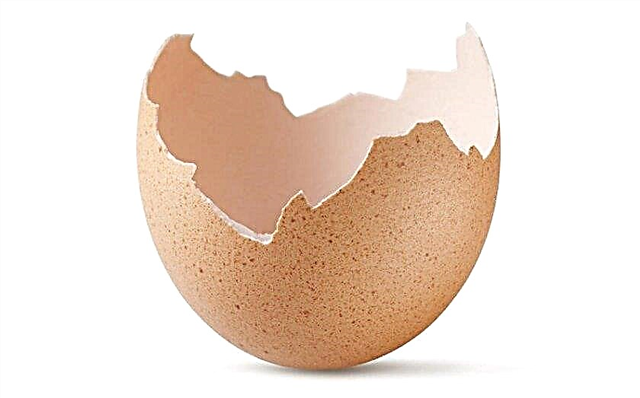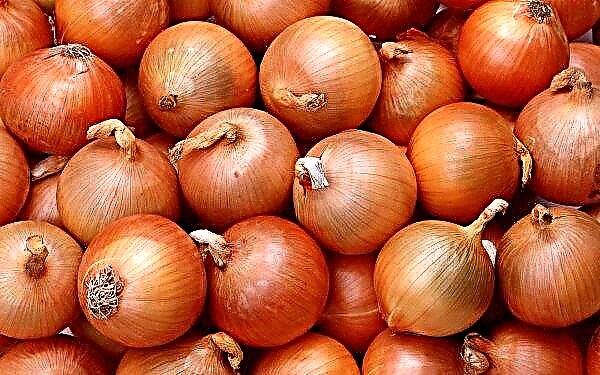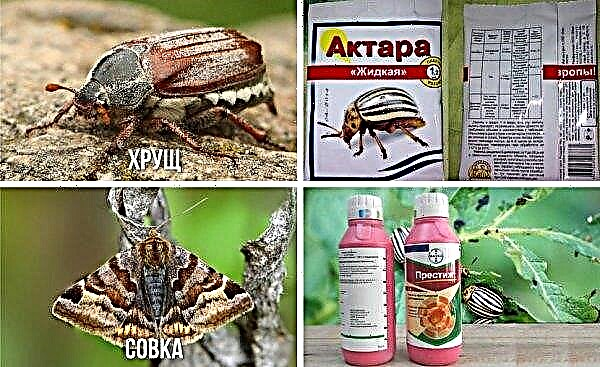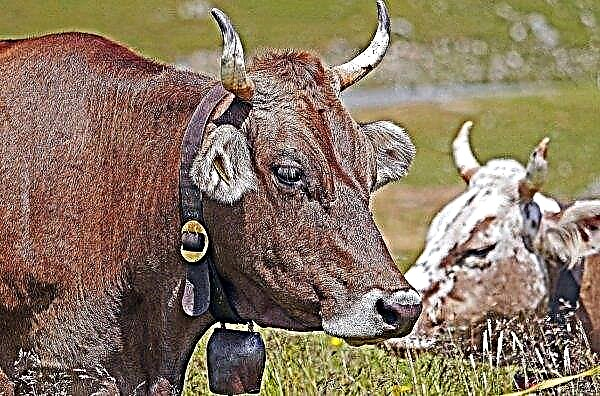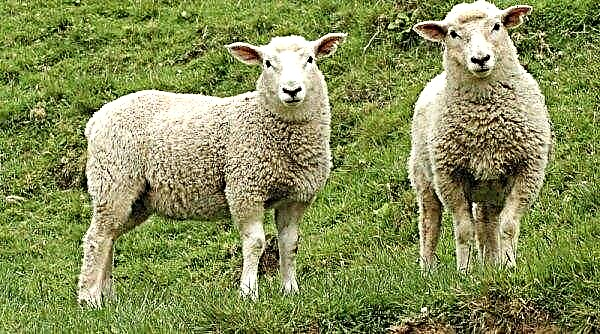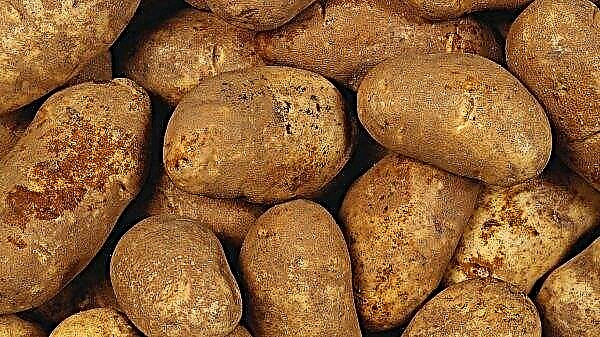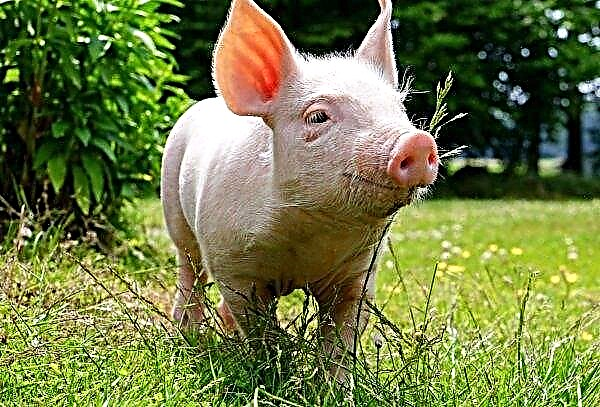Among the egg breeds, a cross called Lohmann White, bred by Lohmann Tierzucht GmbH of Germany, is noteworthy. These are beautiful, highly productive layers with a calm character. About the features of the breed and its care - read in this review.
Description and characteristics of the Loman White breed
The main goal of the German breeders was to obtain highly productive layers. And they succeeded. The productivity of Loman White is 300-350 large eggs per year. High productivity is provided by the precursor breed - Leggorn. She also provided an easily recognizable exterior of the new breed.
Did you know? Chicken egg is considered an ideal product. But its most valuable part — amino acids — begin to decay after 7 days. That is why immediately after the laying, the egg can be considered healing, and in a week — suitable only for culinary purposes.
Brief history of the breed
Lohmann White was launched relatively recently. During its development, German scientists used their vast knowledge in the field of genetics and experience in obtaining highly productive chickens. White Loman bred from brown Loman and Leggorn. The result was a beautiful bird with white plumage, possessing the highest possible productivity. The result obtained is fully consistent with the stated goal. In addition, chickens are not afraid of moderate and low temperatures and adapt well to new climatic conditions.
Appearance
Loman White - owners of the characteristic appearance of egg breeds. They have a trapezoidal dense body with a wide breast and a voluminous stomach, low thin paws, a small head with a pronounced leaf-like crest, and a thick white plumage. The tail is wide at the base, lush. The eyes are orange-red. The beak is strong yellowish, in adults - keratinized.
Nature and behavior
A balanced temperament makes these birds comfortable even for beginners to keep. Layers are extremely calm and easy to get along with other birds in the courtyard. Light and very mobile, they are considered somewhat noisy, but this does not create any additional problems for the farmer.
Light weight and extreme mobility require a fenced area if you use a range. Roosters are gallant, always take good care of their "harem". One rooster is enough for a herd of 15-20 chickens. Birds feel equally good both at the cage and with the free range.
See also the features of other egg breeds of chickens:
Puberty
Loman White becomes sexually mature and begins to lay eggs by 4.5–5 months. With good nutrition, from the very beginning they begin to lay rather large eggs. These are birds of an industrial direction, therefore they are distinguished by the stability of oviposition.
Productive Characteristics
As for the productivity of the breed, it is very high:
| Weight | Chicken - 1.5 kg, rooster - 2 kg |
| Puberty | By 4.5–5 months |
| The average annual egg productionb | 300-350 pcs. |
| Egg mass | 55-60 g |
In order for the productivity to remain stably high, chickens need the correct temperature regime (not lower than + 18ºС). During the formation of the reproductive system of layers, they provide a large amount of calcium and vitamin complexes. Nutrition always has a significant impact on productivity.

Advantages and disadvantages of the breed
- The advantages of the breed include:
- extremely high productivity;
- stable egg production, even in winter;
- precocity
- large eggs;
- livable character;
- quick adaptation to new conditions;
- good adaptability to both heat and cold;
- high viability;
- low feed intake.
Did you know? Young chickens have smaller eggs, but they have a more valuable composition than eggs of adult laying hens.
- The disadvantages of the breed:
- modern crosses were obtained using new genetic technologies, therefore it is impossible to obtain offspring with the same characteristics from them at home;
- after reaching the maximum productivity, it begins to gradually decrease and after 1-2 years it decreases by more than 50%, therefore, the herd must be regularly changed;
- when breeding crosses, they try to exclude the instinct of incubation among birds, so they cannot be used to breed offspring;
- the breed is egg, so you can’t get a large amount of meat from these birds.
Basic rules for breeding and keeping
Loman White’s hens are no more complicated than other hens.

Basic content requirements:
- provide birds with good nutrition;
- regularly change the litter, clean and disinfect the chicken coop to prevent the spread of skin parasites and pathogenic microorganisms;
- at floor keeping provide birds with a walk.
Did you know? The egg laying record belongs to the Leghorn chickens. It was installed by a laying hen called Princess The Cavan, who laid 361 eggs in 364 days.
Requirements for the place of detention
Environmental conditions always affect the well-being of birds and their egg production, therefore, important factors in any way of keeping are:
- temperature;
- humidity;
- gas contamination level.
For adult chickens, the temperature should not be lower than + 18 ° C. The optimum temperature is +22 ... + 24 ° С. Humidity should be at the level of 60–70%. If the temperature decreases or rises, then this must be done gradually. Insulation of the house and the absence of cracks will help to ensure this property.
Humidity and temperature can be controlled with the help of supply and exhaust ventilation. It should provide a reduction in the amount of carbon dioxide in the air below 0.3%, and oxygen - above 20%. There should be no drafts in the room.

The light regime of the house should not be shorter than the seasonal duration of daylight hours. But it should be remembered that hens do not rush in the dark, therefore, daylight hours in winter are artificially extended with the help of lamps, in addition, they use twilight lighting, turning it on from 4 a.m. and turning it off at 21:00.
Attendants should carefully monitor the cleanliness of their clothes and shoes. The place of keeping the chickens should be inaccessible to rodents or wild birds in order to avoid infection. Birds are examined daily for sick people in order to take timely measures to isolate them from the main herd. All preventive measures, including vaccination, should be carried out strictly on schedule.
Important! Egg production is significantly affected by loud sounds (not for the better), so you need to keep chickens away from sources of constant noise.
To achieve maximum productivity, they organize a high-quality diet. The laying hens should always have fresh water at room temperature (+ 20 ° C). Sawdust is used as litter for free keeping. As wetting, the dirty litter must be removed. Sockets also use sawdust. Normally, 4 chickens should have 1 nest.
Feeding
The following factors affect bird feed intake:
- weight and age of birds;
- air temperature and season;
- feed particle size;
- energy value of feed.
Feeding should take place in 3-4 doses. In the morning and evening, hens are fed grain. During the day they give mixers, green and concentrated feed. Young chickens can be fed with natural feed or starter compound feed, and before starting the laying of eggs, a source of calcium must be introduced into their diet.

It can be a shell rock, chalk, ground eggshell. It is also advisable to include cottage cheese or whey. When the oviposition becomes stable, young individuals are transferred to adult bird feed.
Feeding rates for hens (in grams):
- grain feed: wheat - 20, corn - 40, barley - 30, oats - 30;
- Mishmash - 30-40;
- boiled or raw vegetables - 100.
Additional additives are meat and bone meal, yeast, chalk, salt, bran. In summer, greens are present in large quantities in the diet. In winter, the lack of greens is made up for with grass meal and yeast feed. The winter diet should be more high-calorie, because chickens need to spend energy not only on egg laying, but also on maintaining body temperature.
Important! For chickens, the problem of obesity is relevant. Overfed hens still will not reach the performance of meat breeds, but they will be worse carried, therefore, be sure to follow the diet.
Hatchery
The breeding quality of cross products is at a high level. But the problem is that you can get quality chickens only in the nursery, where they are bred using the technology of the manufacturer. That is why Loman White chickens are not hatched in a home incubator, but purchased.
Before you purchase chickens, prepare a place to keep them (a large box with a heating lamp). The air temperature for day-old chicks should be at the level of +35 ... + 36 ° С, and then it is gradually reduced to reach the index of + 25 ° С by the end of the month. Relative humidity should always be at the level of 60–70%.

A sign of good health of the chickens is their even distribution over the box. If they are bored under the lamp, it means they are cold and need to increase the air temperature. In the first 10-14 days, lighting should be around the clock, after which it is gradually reduced to 9-10 hours.
Chicken feeding schedule (once a day):
- the first week - 8 (the interval between feedings - no more than 3 hours);
- second week - 7;
- third week - 6;
- fourth week - 5;
- fifth week - 4.
Important! Uneven egg shell with tubercles and growths — a sign of too hard water that birds drink. There are many heavy metal ions in such water. If possible, install a filter on your line. — this will allow birds to stay healthy.
Starting from the second month, young animals are transferred to 3 meals a day. The diet for 1 chicken in the first week of life is 5-10 g of feed per day. Then the amount of feed is gradually increased. When feeding compound feed, follow the directions on the packaging. With natural nutrition, in the first days you need to feed boiled millet, boiled eggs, dandelion greens. Later, boiled root vegetables (carrots), yogurt and low-fat cottage cheese are added to the diet.
Disease and Prevention
Modern selection provided the feathered Loman White with a stable immunity to diseases. There are no particular diseases to which these chickens would be predisposed, therefore care and prevention of diseases will be standard for them. Regardless of the breeds, the main diseases for chickens are infectious, as well as infection with parasites. All infections are accompanied by lethargy of the bird, decreased appetite, and sometimes - diarrhea.

The main signs of sick chicken:
- lack of activity - all the time sits or tries to hide in a secluded place;
- not in contact with other birds;
- It looks painful: drooping wings, disheveled, dirty feathers, dull eyes.
Only a veterinarian can correctly diagnose an infectious disease on the basis of tests, examination of the bird and diagnosis of the disease. First of all, it is necessary to isolate sick birds from the herd, immediately consult a specialist, and only then begin treatment.
At the same time, the chicken coop is subjected to disinfection with a solution of lime, the litter is completely replaced, the feeders and drinking bowls are cleaned and disinfected, all other birds are examined. Vaccination for major infectious diseases is carried out annually. The vaccination form can be aerosol (spray), added to a drink, or injected with a solution.
The vaccination program for chickens and young animals includes:
- vaccination against infectious bronchitis of chickens;
- prevention of mycoplasmosis and bacterial infections;
- stress prevention;
- prevention of salmonellosis and colibacillosis;
- fortification.
 Infection with helminths cannot be determined visually, therefore, for periodic deworming, birds are given the drug “Fenbendazole”. This is a fairly effective remedy that acts against various types of parasites. The peak incidence of helminths usually occurs in the summer.
Infection with helminths cannot be determined visually, therefore, for periodic deworming, birds are given the drug “Fenbendazole”. This is a fairly effective remedy that acts against various types of parasites. The peak incidence of helminths usually occurs in the summer.
Birds can also suffer from poor diets. In this case, not only intestinal diseases develop, but vitamin deficiency as well. Replenish stocks of vitamins with compound feed with a mineral-vitamin complex or carrots, beets and greens in a natural diet. Prevention of rickets and bone apparatus diseases consists in adding bone meal, chalk, eggshell or other sources of calcium to a normal diet.
Important! When treating chickens against skin parasites, it is forbidden to direct the sprayer onto the feathered head. If you are processing a chicken coop, then the birds need to be removed from the premises for 8 hours.
The attractiveness of the Loman White chickens and their high productive qualities make these laying hens extremely popular. And the simplicity of maintenance and care are additional advantages, because of which it is worth choosing this breed for large volumes of domestic eggs.


